Note
I've seen the Angel referred to as: "La Victoire Ailee", or Winged Victory. Is there any official confirmation for her name? Considering she's the only one left after the West End removed her, we should have a name for her...?
La victoire ailée is often used as another name for the antique god Nike. She is winged and sometimes carries the laurel wreath, a sign of her role as the one rewarding glory and fame.
This seems fitting for the Golden Angel, as she is winged and carries an ornate item in her hands. But if looking closer it's not a laurel wreath, it's a bow:
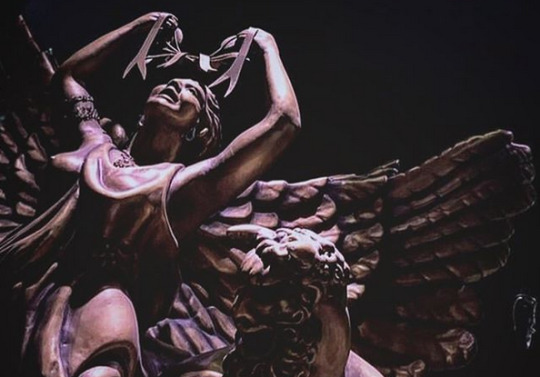
The name stems from the ALW POTO libretto: "The Rooftop of the Opera House. A statue of 'La Victoire Ailee' - the same as that which tops the proscenium. It is twilight."
Which underlines that the transition from rooftop to stage is meant to be seamless and out of time and place, almost filmatic. It is also a jump in time and place that is lost with the removal of the Golden Angel in West End, as the new Pegasus is stage bound.
I am guessing the libretto reference to the sculpture reflects back on the Lon Chaney movie, where he can be seen by the foot of a winged sculpture. But the actual Palais Garnier rooftop doesn't house a "victoire ailée" as far as I can tell. This sculpture overview from Wikipedia shows:

The middle sculpture of Apollo is the one Leroux refers to in his book, in the chapter fittingly named "Apollo's Lyre". Why is the lyre specified? Because the chapter ends with the description of the glowing eyes that can be seen through the lyre strings - quite chilling. And I guess also a nice meta reference to the comment of "music that burns".
The side sculptures are winged, but they are meant to represent harmony (music) and poetry (words). Bjørnson's Golden Angel is like a merge of these and the aditorium sculptures, which allows for the jump in time and space. She keeps it more ambiguous.
In short... the libretto do name the proscenium sculpture, if only indirectly, so it would not be wrong to use that name. But I will probably stick to the name "Golden Angel". I find it easier and more established.
And yeah, I did try to find out what Bjørnson herself called it, but an early concept sketch only names it "large gargoyle" and I don't have the later tech sketches for it. In the concept sketches she has however specificed two interesting things:
"Pros arch should change/revolve w. frightening lit from inside statues" and "Chandelier goes up out of pit (Do not like the drape at the top (I.E. in the ceiling, above the proscenium) - but like it in the pit". Not to forget the legendary axe:

Now anyone for some fun photoshopping or phanart? :D
41 notes
·
View notes
Text
Something that always confused me when I read TPOTO was why The Phantom chose box five out of all the private boxes to be his.
Out of all the seats in the house, box five is among the worst and would be (and still is) sold cheaply (average 65 francs at cheapest in 1880, now sold a between 10-25 euros nowadays) on general sale. A higher profit would've been made from a year-long booking, especially since there are multiple seats, so it would be 65 francs per person on a yearly booking no matter how many people are in there at once, but still not as much as other seats.
Visual wise, a good chunk of the left side of the stage is cut off and parts of the performance that would occur in the higher wings would be completely unseen, so, why choose it? Isn't the main point of going to go watch an Opera is to actually see the performance?

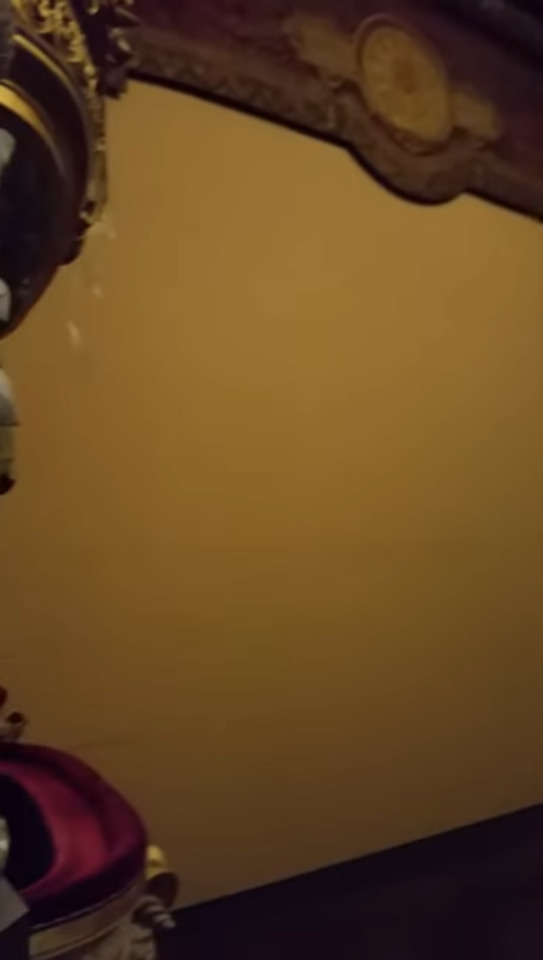
(A screenshot from the Palais Garnier's seat listing stating the best seats for viewing and the view from the box five via this video)
Having been there myself in late May, I found an answer to my own question and I'm gonna share it with you guys because maybe someone else was asking the same thing!
Although yes, the stage is half cut off, it's one of, if not the, best seats acoustic wise. You're a perfect distance from the orchestra as well as the stage for everything to sound just right. As much as The Phantom would've loved the operatic performance, I don't doubt he would've been more focused on the music itself as well as the vocals, and, mainly, Christine.
Further, although going to the opera was more of a social thing than an entertainment thing, so the boxes were built for aristocracy to be seen above all things, you can disappear from public view quite easily in that box. There are two to three rows of seats going backwards to the door, so all one would have to do to disappear from sight of anyone on stage or in the audience would be to just move a seat backwards (which means he wouldn't have been able to see the stage at all, but would still be able to hear everything perfectly well).
Plus, the box is located right at the end of the row of private boxes, as well as very close to entry and exit stairs, both public ones and private ones meant for stage hands and general workers.
All in all, those three reasons are why the box was chosen and kept in high priority for The Phantom, because he could quite literally disappear, like a ghost, by just moving himself in the box, as well as disappear out of the box and hear Christine almost perfectly.
3K notes
·
View notes
Text
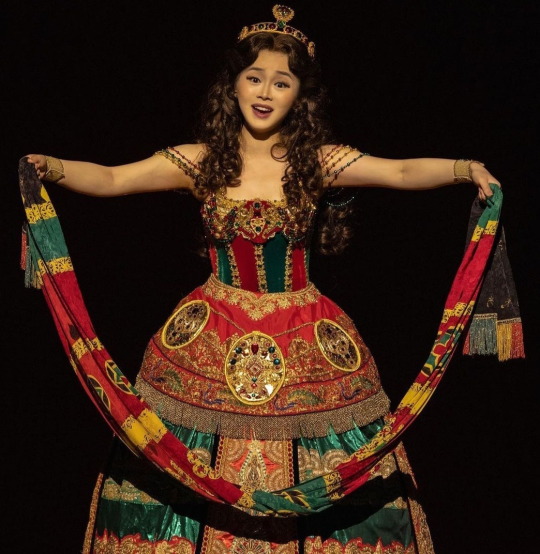
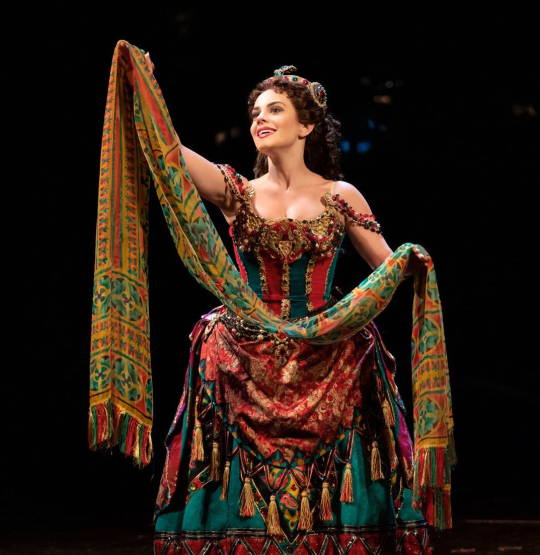
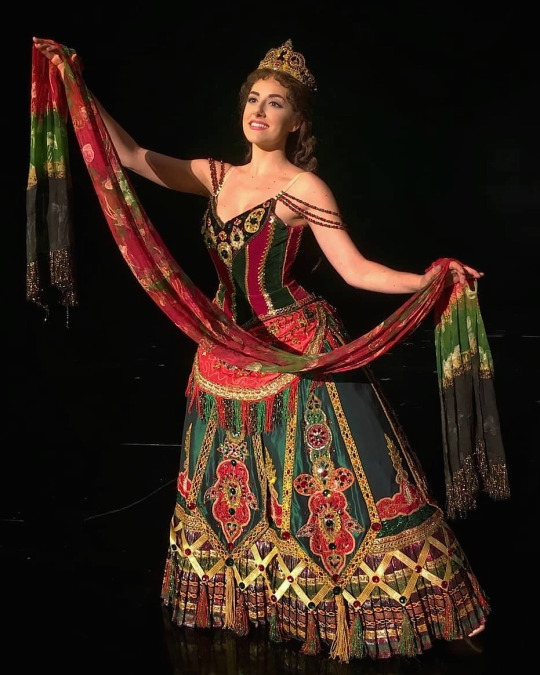

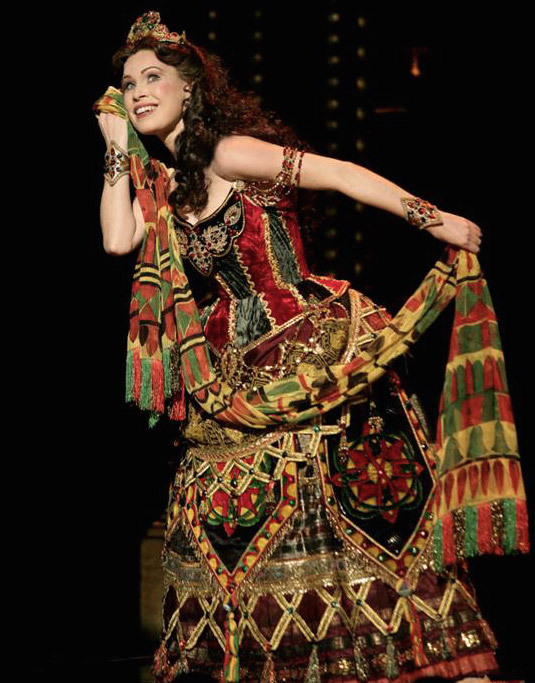
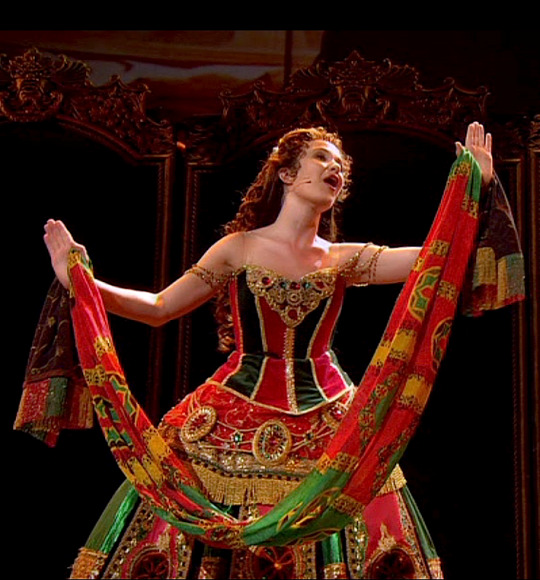
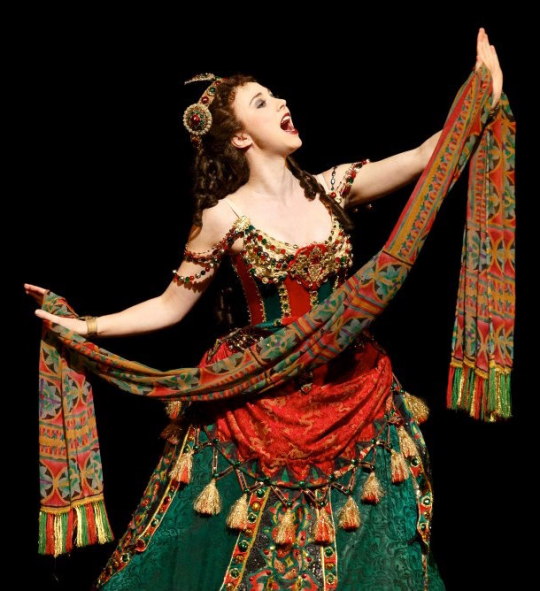
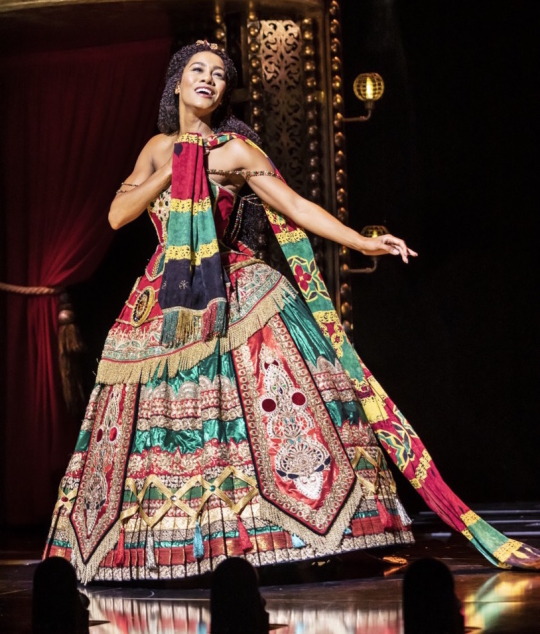

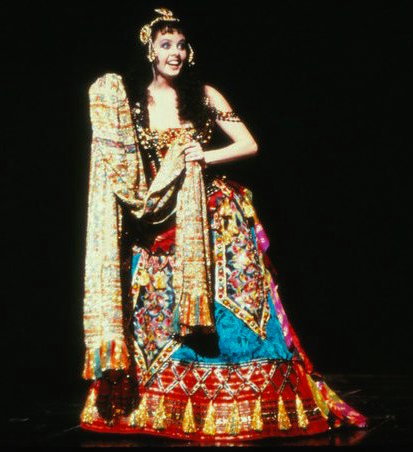
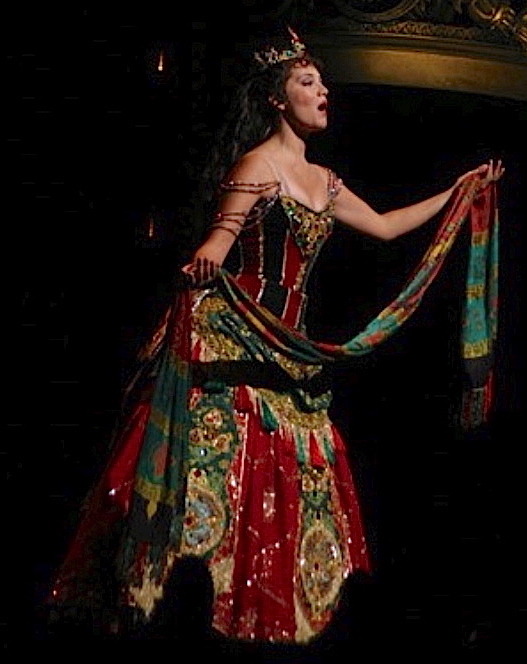
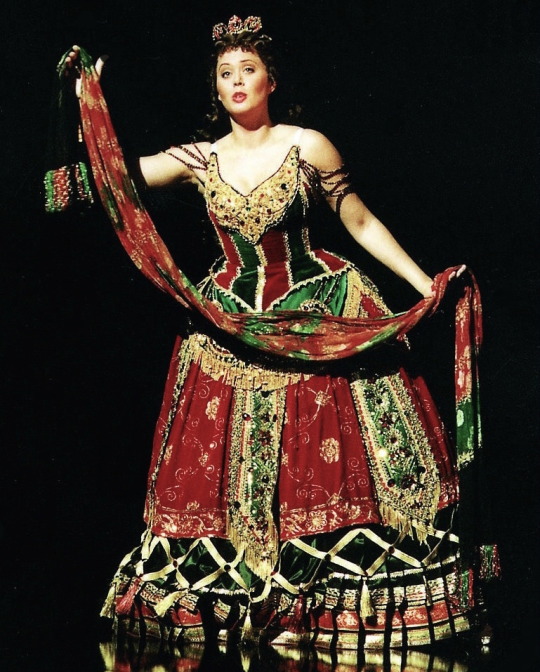

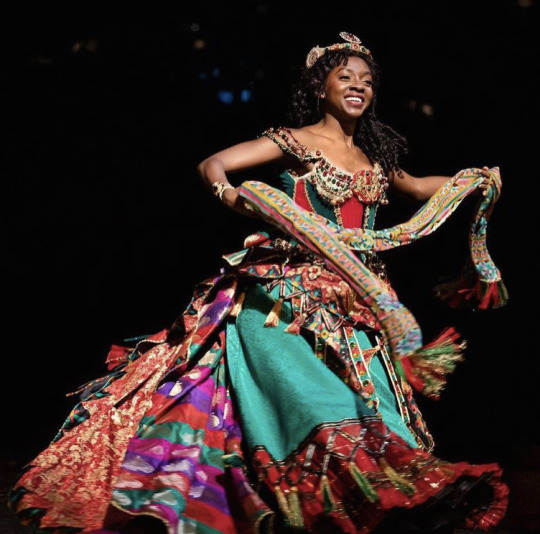


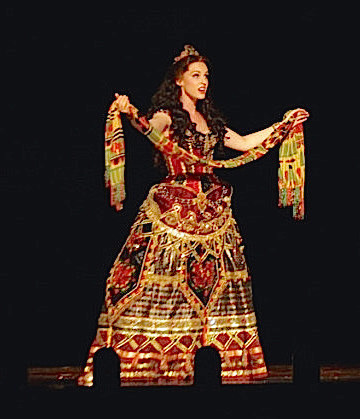
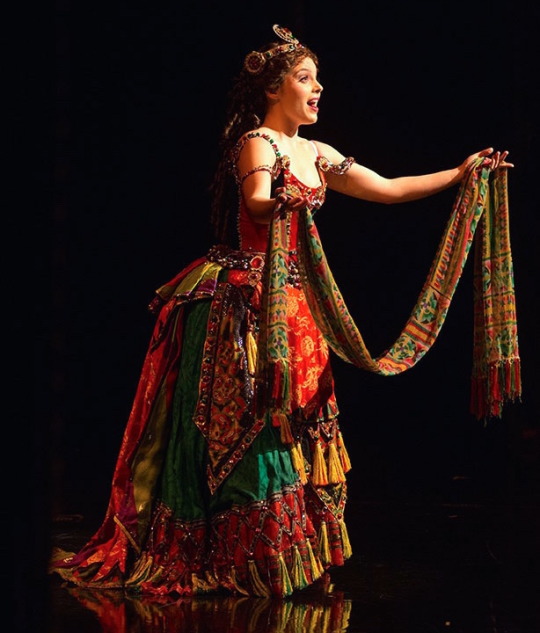

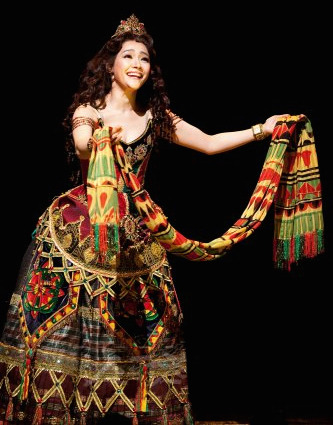
ELISSA COSTUME + SHAWL
Yang Chengxiyi, Beijing
Meghan Picerno, Broadway
Giulia Nadruz, Sao Paulo revival
Paige Blankson, West End revival
Ana Marina, World Tour
Sierra Boggess, RAH
Sam Hill, Broadway
Lucy St Louis, West End revival
Holly-Anne Hull, West End revival
Sarah Brightman, Broadway
Claudia Cota, Buenos Aires
Victoria Krantz Tocca, Copenhagen
Sae Yamamoto, Yokohama
Emilie Kouatchou, Broadway
Chiaki Kainuma, Tokyo or Osaka
Deborah Dutcher, UK Tour or West End
Emilie Lynn, World Tour
Mary Michael Patterson, Broadway
Valerie Link, Hamburg revival
Kim So Hyun, Seoul
(original design by Maria Bjørnson)
149 notes
·
View notes
Text
I love how @ongakunotenshi called me 'PHriend' 👻🥰
Why so green? Am I seeing Wicked or Phantom?
Did POTO Korean producers S&CO do something to make POTO Korea’s proscenium look so gross and green in order to discourage audiences from taking photos? (You bet this did not happen in NYC, London & China!!)
So S&CO in Korea has these extremely strict rules:
(1) Absolutely no curtain call photos/videos allowed.
(2) No designated day(s) for fans to meet & greet Phantom actors at all. Stage dooring for Phantom in Korea doesn’t exist. Actors either (a) stop to wave and bow and then get into a car or (b) walk quickly while smiling and bowing.
(3) No official curtain call photos/videos were ever released except a few seconds in promotional videos early in the production.
So one day, my phriend @jeremyonthelair and I were talking about POTO’s proscenium and how beautiful the angel statue is. But then he mentioned something that piqued my interest right away.
“Did you notice Korea proscenium in Charlotte theater has a green tint on all the golden sculptures? And the strangest thing is I didn’t see the green tint in person!! Only in photos!!”
Side note: Jeremy saw POTO China this past summer and POTO Korea in the fall, so you could say he had something to compare to in a short period of time.
We proceded to share proscenium photos – Jeremy with his China and Korea photos and me with Bway photos.
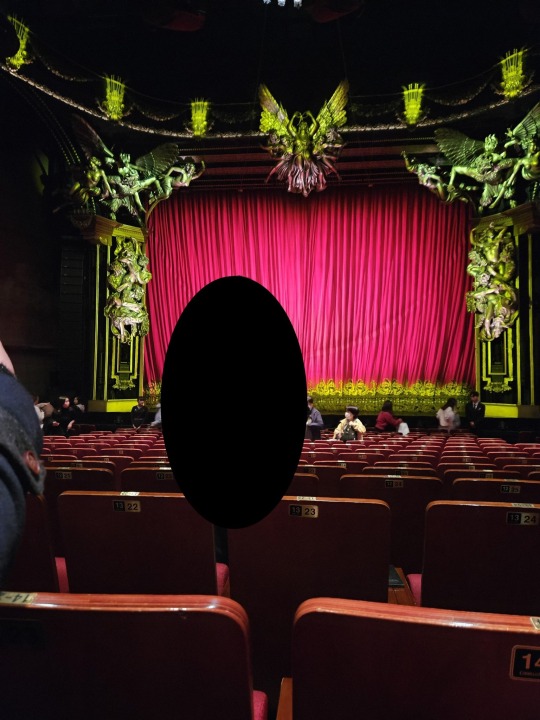
↑ Jeremy’s Korea photo
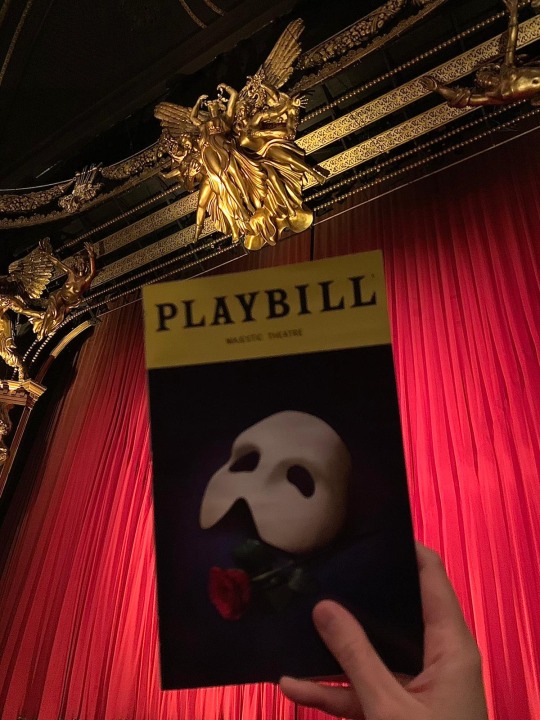
↑ My Majestic theatre photo taken on the day of the last public performance

↑ Jeremy’s Shanghai photo
Please note: I did not edit any photos in this post at all (other than a black oval to cover my phriend).
Here I have compiled some Korea proscenium photos as evidence. And for comparison, I also added some Majestic theatre photos provided by me and a fellow NY phan @flagbridge – along with some POTO China photos.
Jeremy’s Korea photos:
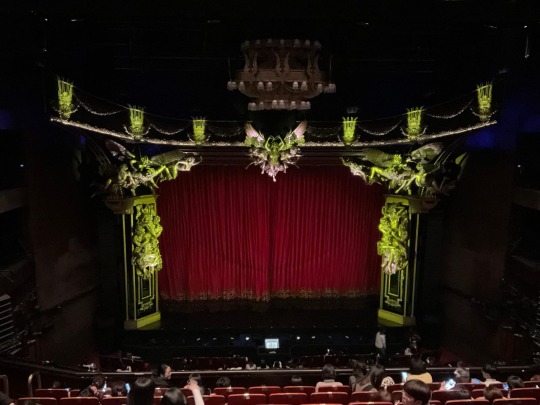
1) ↑ Taken with an iPhone

2) ↑ Taken with a Samsung
The weirdest thing is —

3) ↑ Film camera looks fine

4) ↑ Xiaomi phone is less affected, somewhat
Here are some Charlotte theater photos and videos I found online:
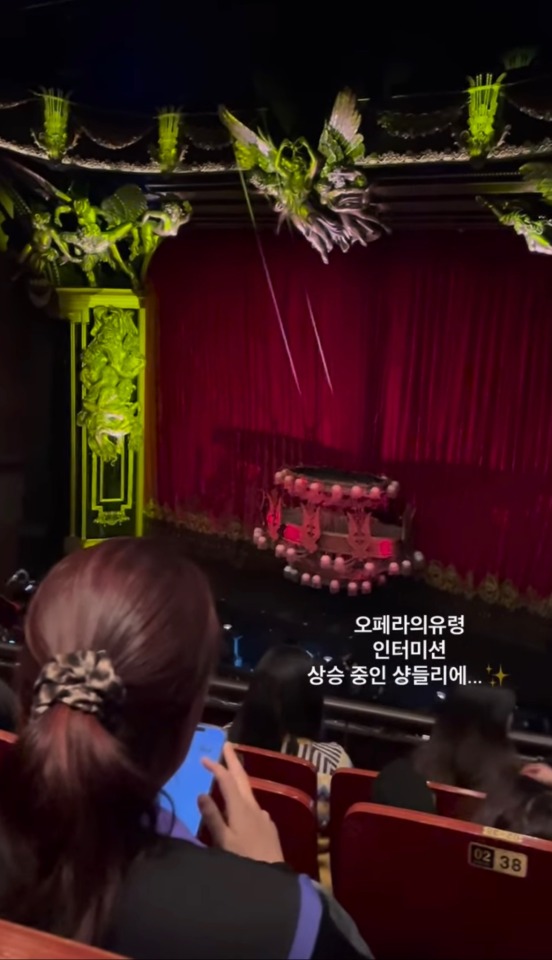
1) ↑ Click on the link below to view the video. Yikes, this does not look good!
https://www.instagram.com/reel/Cz09hP6rh-B
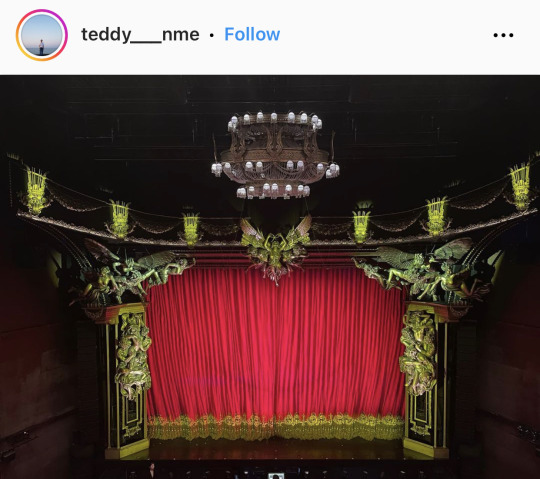
2) ↑ Another one from Mezzanine level
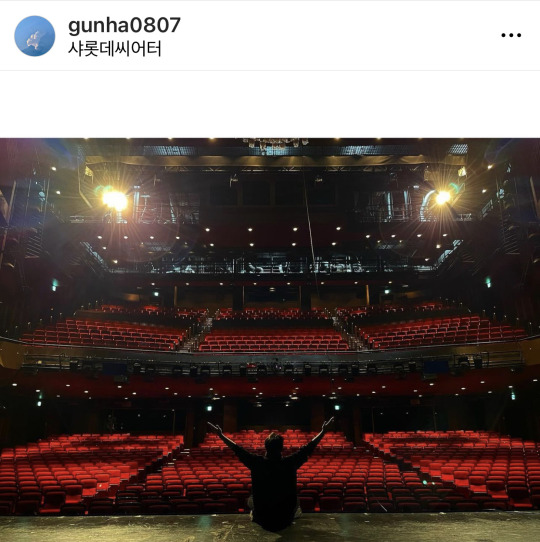
3) ↑ The current Korean Raoul, Gunha Hwang, posted this photo of the stage in Seoul – are these lights what’s turning everything green?
https://www.instagram.com/p/Cz0ZmborHIj
The same thing is happening in Daegu, Korea right now:
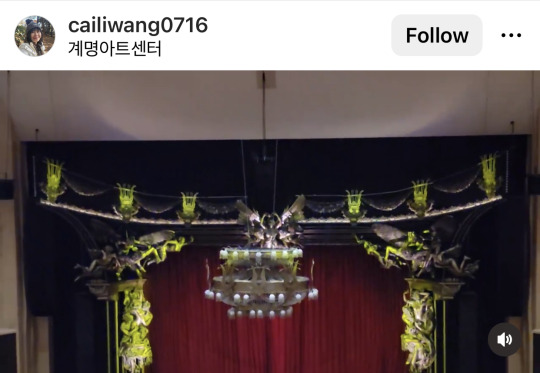
4) ↑ Posted Dec 23 in Daegu – click on the link to view the video
https://www.instagram.com/p/C1L4dEjBTkj

5) ↑ Another video from Daegu
https://www.instagram.com/reel/C1OnYyLJ6ry/
Now here are my Majestic theatre photos:

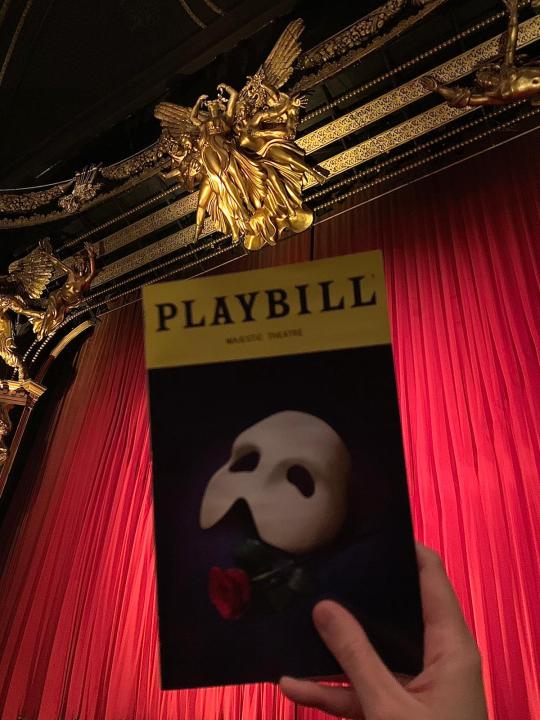
↑ Taken in April of 2023

↑ Here is another Majestic photo from a fellow NY phan @flagbridge
https://www.tumblr.com/flagbridge/728351820760612864/shows-i-saw-in-2023-part-1-phantom-of-the-opera Let’s take a look at POTO China proscenium taken by theatre-goers:

↑ https://weibo.com/1766731021/4959005917580968

↑ https://weibo.com/3965362386/4967561219803733 My question to @lucygold95 @roadtophantom @fadinglandtragedy who have seen POTO in Korea. Did you see the gross green tint on the proscenium in person? Why do you think this is only happening in Korea?
I’d love to hear other phans’ thoughts as well!
Lastly, I want to thank my phriends Jeremy and @flagbridge for letting me use their photos.
37 notes
·
View notes
Note
It's been interesting hearing the degree of the physical challenges of playing The Phantom. However, this really made me appreciate the physical challenge of playing Christine. She is on stage for almost the entire... very long show! Sings a lot! She has SO MANY costume changes. So many times down on the floor (Hannibal dance- lying in the boat - end of MOTN - in STYDI - twice in the Final Lair.) Avoids a chandelier! Soooo many emotions. Hazzah to Christine actresses! Comments?
Honestly not much! You've pretty much summed up what it's like to play Christine: constantly singing, sometimes from the low end of the range all the way to the highest, constantly acting, some dancing that can be strenuous depending on how much effort you put into it, tons of costume changes, and you are onstage all. the. time.
And even more galling - many audiences, especially back when Phantom first started, didn't even appreciate it! The Phantom was the plum role, the iconic character, the guy getting the last bow. Christine is basically the workhorse of the entire show but I've seen people who have said they don't even watch her when she's onstage. I've seen people who don't remember the actress they saw or have nothing to say about her besides, "Yeah, she did her job." And that's if they're not hating on her for leaving the Phantom or calling her un-feminist for going with Raoul ("She rejected passion and sex! That's a bad message for girls!") or for being attracted to the Phantom ("She likes a guy who stalks and kidnaps her! That's a bad message for girls!").
It's why I had such sympathy for Rebecca Caine when she described Christine as a role where she "worked terribly hard for very little sympathy". But I can guarantee that if the Christine you see is bad, it will bring the show down even if the rest of the cast is decent, because again, she is onstage all. the. dang. time.
Thankfully, I think the times have changed a lot and there's a lot more appreciation for her and the actresses playing her, so that's really cool! I think a lot of people have come around to seeing the complexity that lies below the "naive virginal soprano" surface impression, or at the very least acknowledge the amount of work that goes into playing her. I've even seen people saying she should be the one getting the last bow... and occasionally it's happened (I believe Celinde Schoenmaker got the last bow for her final performance in London). And that is all fine by me! Christine is my favorite character in the show (probably obvious because I talk about her the most) so it's really lovely to see others loving her as well!
86 notes
·
View notes
Text
Charlotte Theater Instagram interviews Choi Jaerim who plays the Phantom in POTO Korea.
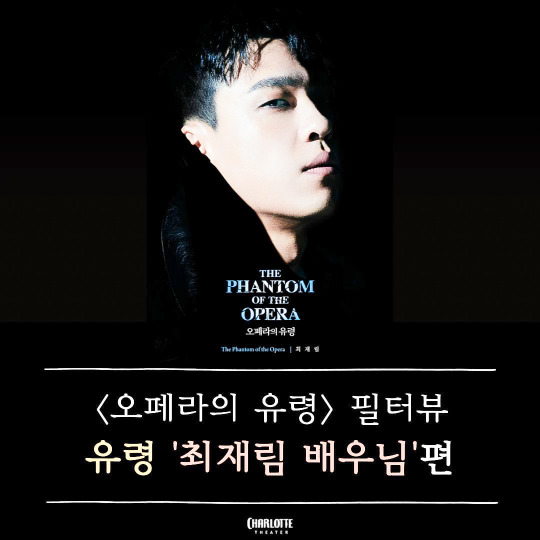
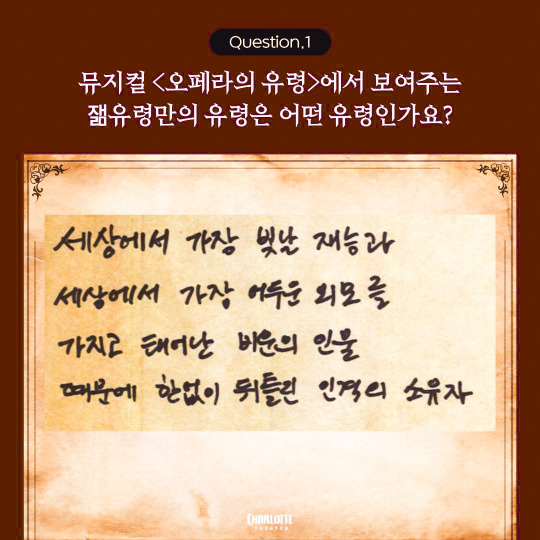
Question 1: What kind of Phantom are you portraying in the Phantom of the Opera?
Jaerim: A man of infinitely twisted personality due to the misfortune of being born with the world's brightest talent and the world’s darkest appearance.
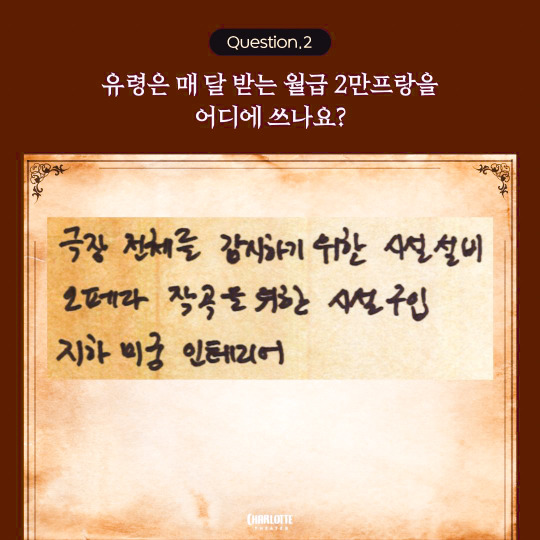
Question 2: What does the Phantom spend on his monthly salary of 20,000 francs?
Jaerim: Purchase of facilities to monitor the entire opera house; equipment for composing operas; interior of the underground labyrinth.
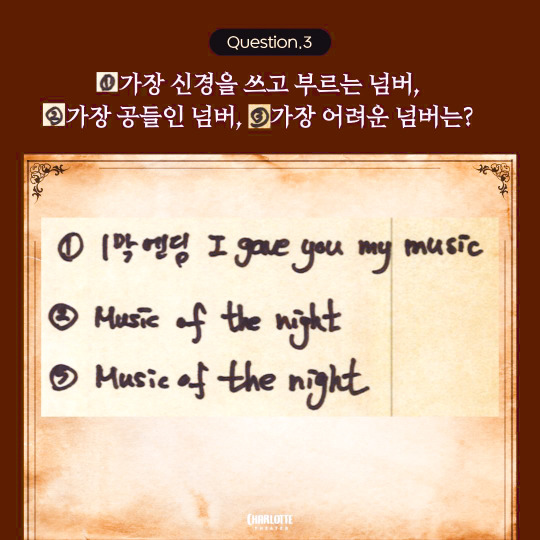
Question 3:
① Which song do you pay the most attention to? ② Which song is the most elaborate? ③ Which song is the most difficult to sing? Jaerim:
① I gave you my music at the end of Act l ② Music of the Night ③ Music of the Night
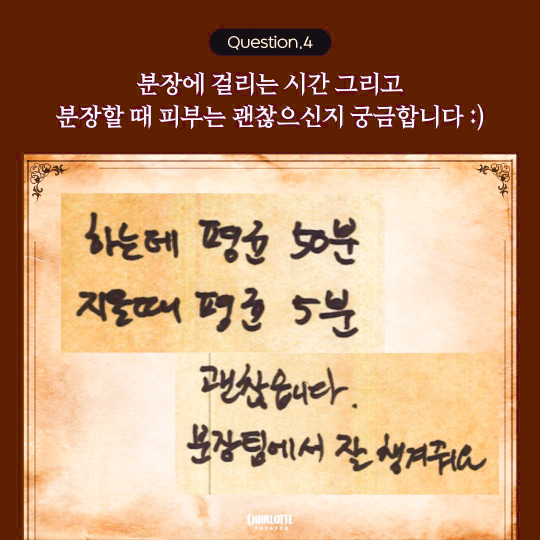
Question 4: I’m curious about how long it takes to put on makeup and if your skin is okay when you put it on :)
Jaerim: It takes an average of 50 minutes to put on and 5 minutes to take off. The makeup team takes good care of me.
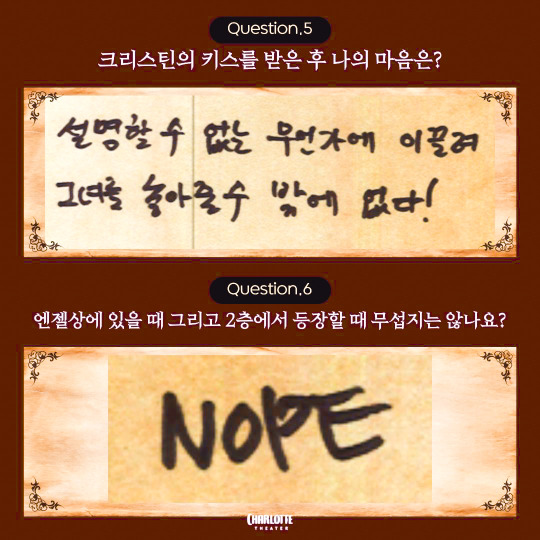
Question 5: How do you feel after Christine’s kiss?
Jaerim: Driven by something inexplicable, I have no choice but to let her go!
Question 6: Isn’t it scary when you are in the angel statue and when you are on the second floor?
Jaerim: NOPE
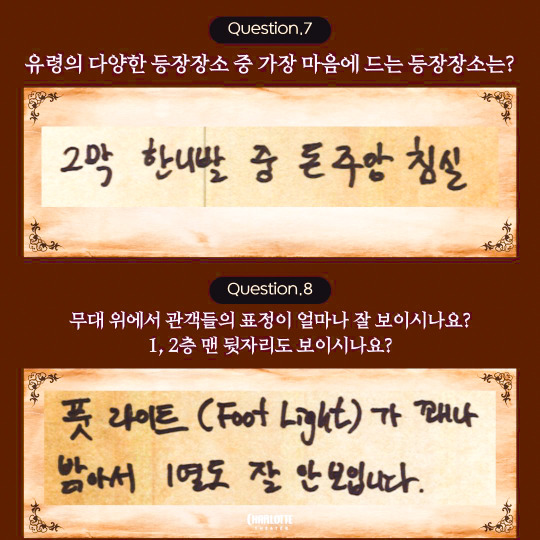
Question 7: Among the various places the Phantom appears, which one is your favorite?
Jaerim: Don Juan’s bedroom in Act ll’s Don Juan Triumphant.
Question 8: How well do you see the audience’s expression on stage? Can you see the back seats on the first and second floor?
Jaerim: The foot light is quite bright, so you can’t even see the first row.
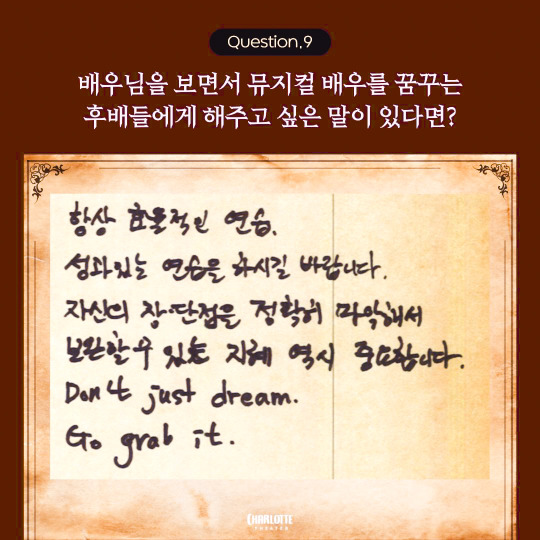
Question 9: Do you have any advice for juniors who dream of becoming musical theater actors while watching you?
Jaerim: Always practice efficiently. I hope you have a productive practice. It is also important to have the wisdom to accurately identify your own strengths and weaknesses and make up for them.
Don’t just dream. Go grab it.
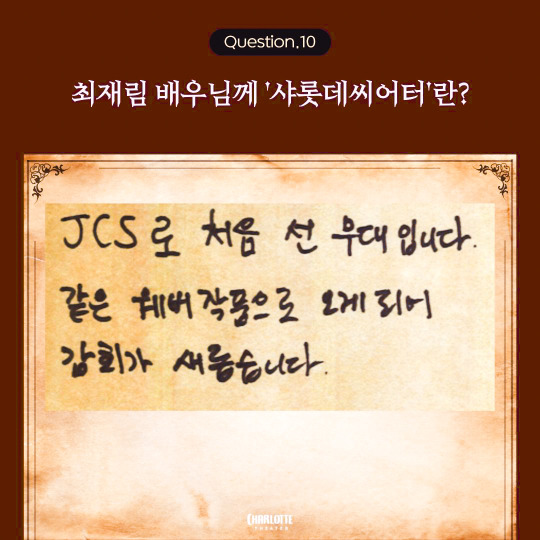
Question 10: What does Charlotte theater mean to actor Choi Jaerim?
Jaerim: My first time performing here was in Jesus Christ Superstar. It’s a new feeling to come here for another ALW work.
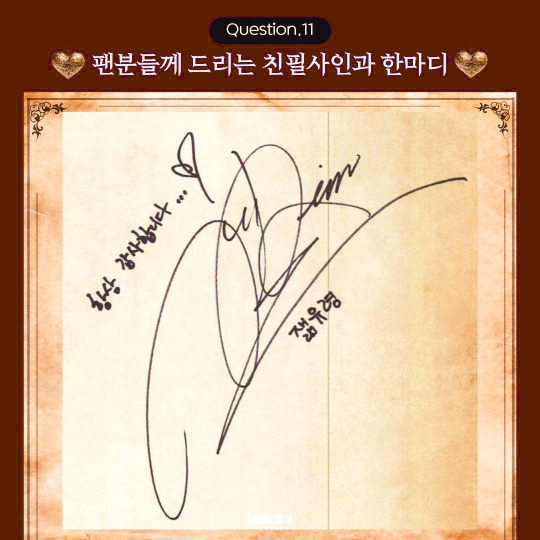
Question 11: An autograph and a word to the fans.
Jaerim: Thank you as always ❤️ - 잶유령 (Jaerim-opera ghost)
Note: I used google translate, if there’s any errors, please don’t hesitste to let me know, thank you.
7 notes
·
View notes
Text
So after ten years of watching the show only from bootlegs, I eventually got chance to see it in person, started with the Chinese and then the Korean production this year. And luckily it was the Brilliant Original in its entirety in Korea.
Playout is always one of my top favourite moments from the musical, so I made this compilation as a memory of my very first experience.
And this way, my 2023 Phantom Journey came to a curtain call.
--------------------
This video is to pay tribute to the Brilliant Original Production itself, to the original creative team as a whole, and to the genius designer Maria Björnson in particular, whose vision has been testified by a standing ovation from phans all over the world throughout the years.
This compilation contains:
• My recordings from the 2023 Chinese Production in Shanghai, and the 2023 Korean Production in Seoul
• A clip published on Weibo by @天酱_
• A clip published on Twitter by Conductor Yang Juin (Musical Director of Phantom Korea)
Available on YouTube at:
youtube
#phantom of the opera china#phantom of the opera#phantom of the opera korea#musical#broadway#maria bjornson#剧院魅影中文版#오페라의 유령#Youtube#it's so good to see the proscenium in its entirety#i don't tolerate any restaged or non replica production#i won't regret anything when i pass away since i watched the brilliant original
20 notes
·
View notes
Text






2023 Phantom of the Opera Mandarin Production
131 notes
·
View notes
Note
I know Mackintosh wanted a cheap production to travel with but couldn't they keep at least the original blockings in the POTO Restaged Tour? It's just choreography, how it was going to cost more? And who directed that cringefest?? Even high school productions aren't that bad. I'm still enraged about christine slapping Raoul, because wtf??
Because Cameron Mackintosh did not just want a cheap production that travels easily, he wanted a cheap production where he would not have to pay royalties to the original creatives, Hal Prince, Maria Bjornson, Gillian Lynne, and so on. One of the big costs of putting on the original is the licensing: paying to use the original direction, costumes, choreography, and so on, because even if the creatives are not directly involved in that specific production, it is still using their ideas to make the show a success, and they deserve to be paid in part for doing that. So to answer your question, no, it's really not "just choreography", it is a large part of the cost, and if you want a cheaper production, that is a thing you have to cut (by changing it).
Of course, as people who were around back then might know, the restaged tour was not entirely popular with fans or even some critics, and so a compromise of sorts was made, where a production was created that sticks as closely to the original as it can but deviates just enough that they don't have to pay royalties to, at the very least, Hal Prince, the original director. And that's how we got the modified UK tour that ran so briefly in 2020 and the reopened London production / London revival (which, yes, is legally considered a whole new production).
As for the person who directed the restaging, it was Laurence Connor, who has directed, among other things, the Les Miserables restaging as well as the Les Miserables and The Phantom of the Opera 25th anniversary concerts. And if you're curious, the person who directed the modified UK tour / London revival is Seth Sklar-Heyn, who also served as a producer and associate director in the restaged tours. So if you watch the London revival (or the reopened Broadway production) and noticed some similarities in blocking between that and the restaging, well, that's probably why.
22 notes
·
View notes
Photo










The Palais Garnier and “Phantom of the Opera” productions on stage: The original 1986 version, costume and set design by Maria Bjørnson
Proscenium sculptures
The grand staircase
Rooftop with rotunda dome and Pegasus
The underground lake
The chandelier
338 notes
·
View notes
Photo






Maria Bjørnson’s miniature models for “Phantom of the Opera”. As you can tell from the unequally leveled boxes in the auditorium, these are for the Broadway production (except the first photo). 1. Maria Bjørnson posing with a model for the West End production, along with photo references and a sample of the Masquerade drapery. 2. The auction set, with the draped up proscenium and the chandelier on stage. Note the doors above the Golden Angel. 3. Hal Prince and Maria Bjørnson demonstrating the Golden Angel in the Broadway set miniature. 4. The Rooftop set with the Parisian skyline. 5. The boat set, with the candelabras up (but without the boat). 6. The Masquerade set with the dummies and drape in place.
122 notes
·
View notes
Photo

“Hal Prince and I had long discussions about how people who were deformed also fell in love. This was their right as well. We decided to choose Nymphs and Satyrs to show the feelings of lust between opposites in a Victorian theatrical way. Trying to attain to the impossible.” (Maria Bjørnson, from http://despiteyourdestination.tumblr.com/post/34521694653/took-this-off-the-original-phantom-site-too-it)
“Of the four major set pieces, one is an elaborate proscenium. It illustrates Lust - women in the throes of orgasm, savaged by men. Primitive and contradictory, as these caryatids were both escaping and succumbing with pleasure, and their attackers were brutal. All of this I describe because the audiences get that message subliminally, because it is diluted - acting as a picture frame, and focusing you on what the stage contained." (Hal Prince, The Scenographer, October 2009)
77 notes
·
View notes
Photo



“He (Hal Prince) said one sentence to me that immediately became a springboard for the show. He said "I hear the thud of heavy drapes, and I see dark Turkish corners”. If you think about it, that’s pretty much what the set is.“ (Maria Bjørnson, Conoisseur, 1988, p147) "The opulence and darkness of the show. This was something Hal Prince and I set out to design right from the start. I remember him saying "I see dark Turkish corners and drapes threading in and out”. (Maria Bjørnson, from http://despiteyourdestination.tumblr.com/post/34521694653/took-this-off-the-original-phantom-site-too-it)
“For the rest of the musical, Maria chose to leave out many visual details. Intrinsically, it is a black enamel box with bits of gilt and few exquisite props - a desk, a fragmented dressing room, and little else - and the roof of the Paris Opera House with the skyline of the city upstage. You are compelled to fill in the blanks, and each person in the audience sees it differently. (…) You provide the details, you provide the missing wallpaper (…).” (Hal Prince, The Scenographer, October 2009)
25 notes
·
View notes
Note
Do you know how Maria Bjornson got involved with Phantom in the first place? Was she handpicked by one of the creatives involved, or was it under other circumstances?
Ya know, that is one of the things I tried to look closer at in an article I published on Maria Bjørnson in 2021. It can be read in parts here: https://mariabjornson.com/downloads/
Or in full here, in the original article also featuring the illustrations: https://dresshistorians.org/wp/wp-content/uploads/2021/10/Winter_2021_issue.pdf
Some quotes:
"Bjørnson had mainly designed for opera and plays when she was approached to design The Phantom of the Opera, a new musical about a deformed genius. The producer Cameron Mackintosh had seen Bjørnsons work several times, but it was her take on the sinking ship in the Royal Shakespeare Company's 1982 production of The Tempest that appeared to have piqued Mackintosh's interest. The ship sank into the floor by simple means - some sails, a bit of rope, wooden remains of a boat - and yet these simple means created the production's own universe.
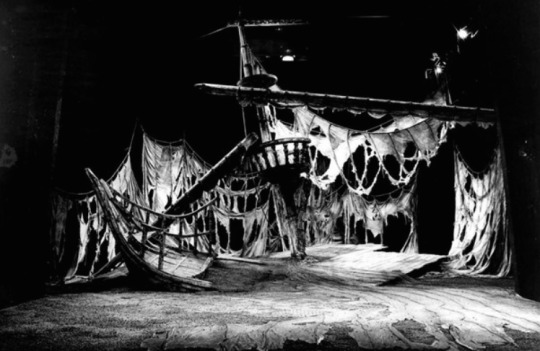
Bjørnson said, "I later asked him whan made him approach me to do Phantom. He said it was the Tempest shipwreck - I had the boat sink into the floor of the stage, and the sail washed up into the sky. That became Prospero's island". Mackintosh was to produce The Phantom of the Opera, and this was the sort of cinematic flow needed for the musical.
Bjørnson was not, however, the only designer considered. When Hal Prince was hired as the director for The Phantom of the Opera, Mackintosh recommended five designers to him. Prince said of the designers, "One stood out. Considering the assignment - a flamboyant Victorian melodrama - it must seem strage that I was especially impressed with a single-set design - almost minimalist - of an Ibsen play. A rectangle, wooden louvers, beautiful furniture, architectually spare: an inviting space to tell a powerful story"
And in my opinion, much of what made them look at her in the first place - the cinematic flow and the sense of "black box" towards intricate single pieces in the set design - is also key to the success of the Phantom design. Which I go on to discuss in the afore-mentioned article :)
72 notes
·
View notes